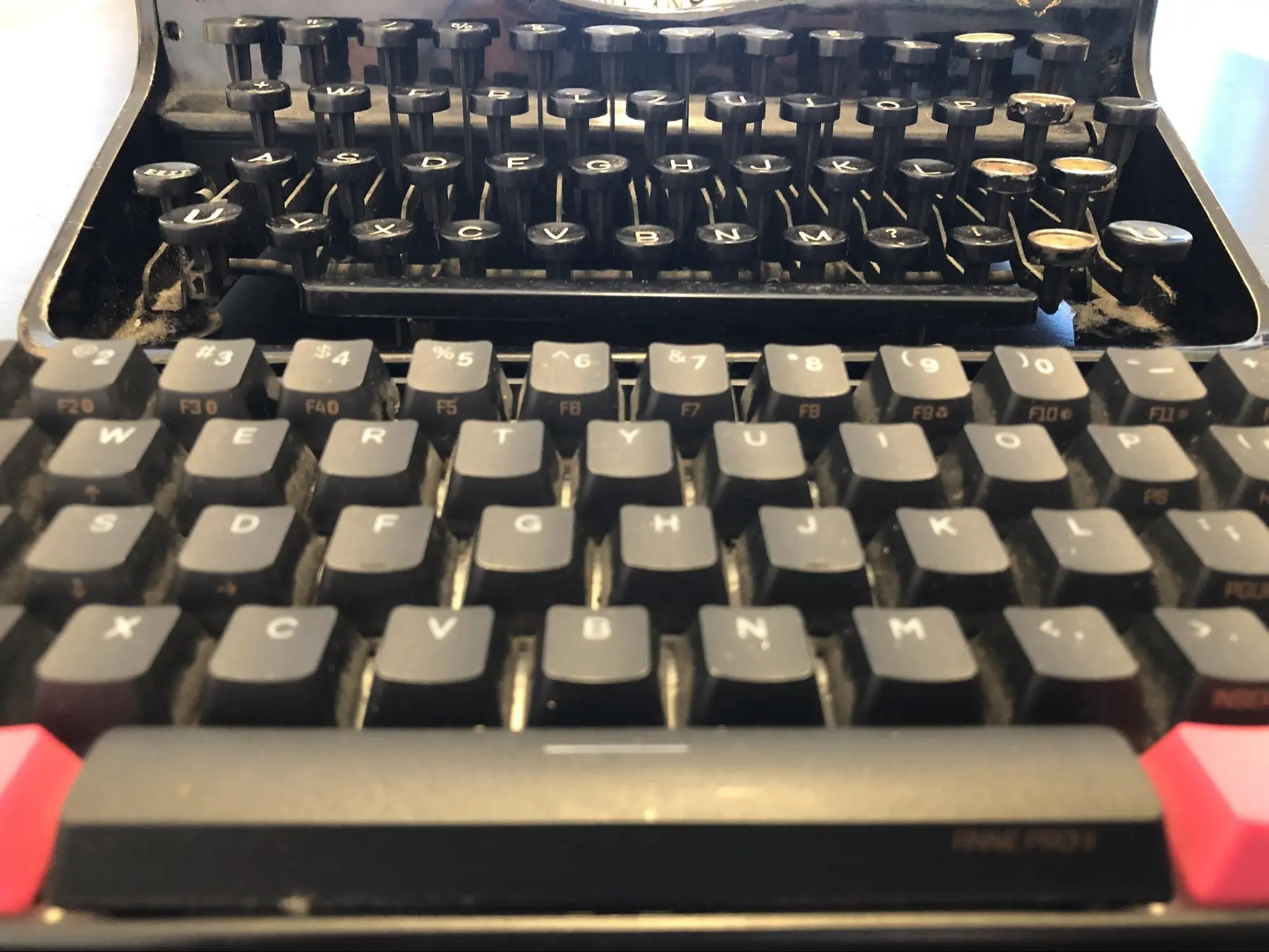In today’s post, I’ll discuss the major drawbacks of the keyboard layout we use every day. The QWERTY keyboard is familiar to everyone, and it’s the one we’ll be focusing on.
If you’ve read the earlier post about typing comfort in Colemak vs QWERTY, this one will go deeper into two key flaws of the QWERTY layout that still impact us today.
QWERTY Keyboard and the Typewriter

Despite being separated by over a century, typewriters and modern keyboards look surprisingly similar. Two common characteristics stand out:
- The offset in each successive row of keys
- The specific arrangement of letters
Let’s look at these two issues in detail.
Row Offset
Ever wonder why the rows on your keyboard are staggered? In my experience, this design neither helps nor speeds up typing. In fact, I find it annoying. It forces my fingers into awkward positions just to hit a key.
Try typing ‘Z’ or ‘X’ accurately and quickly — I miss them most of the time. That made me curious, so I started investigating.
Here’s what I found:
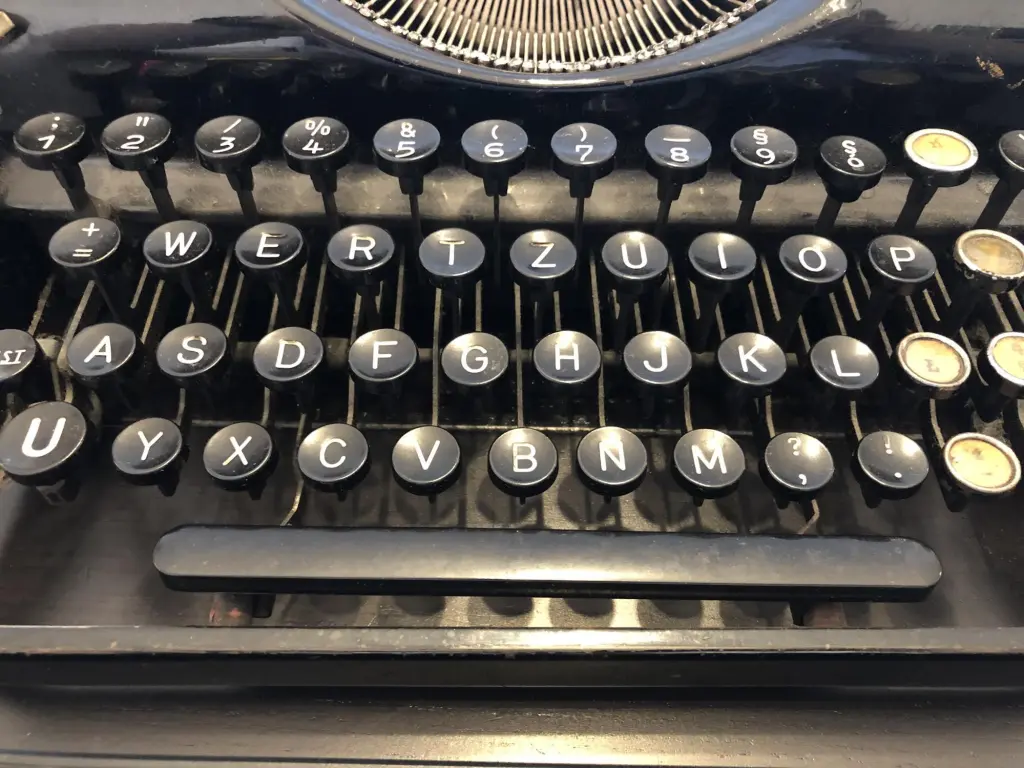

Notice the construction of the typewriter keys. The reason for the staggered rows lies in how the mechanical linkages were designed. The rods underneath had to fit next to each other, and that led to each row being shifted.
MYTH: Row offset was created to optimize typing.
FACT: Row offset was needed to fit the key mechanisms in typewriters.
QWERTY in Typewriters
The QWERTY layout was invented for typewriters — ancestors of modern keyboards. It was patented in 1878 by Christopher Latham Sholes, a journalist and inventor.
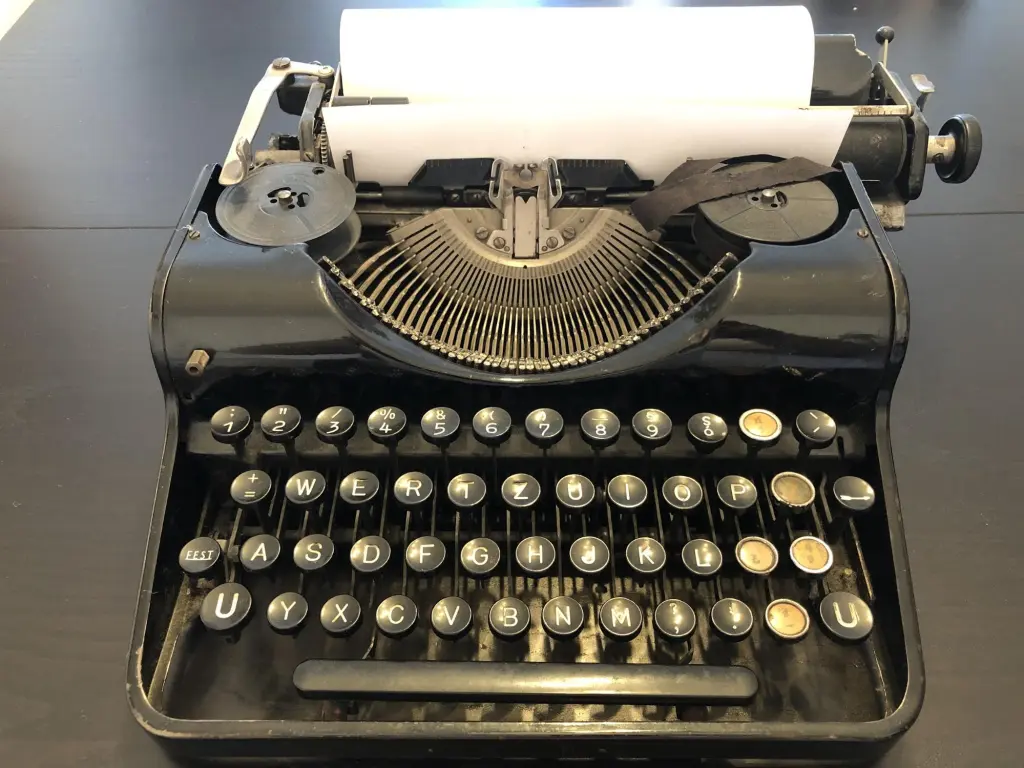
Before QWERTY, keys were arranged alphabetically, which often caused typebars to jam when typing fast. Sholes studied letter pair frequencies in English and rearranged the keys to slow down typing and reduce jams.
Take a look at these typebars:
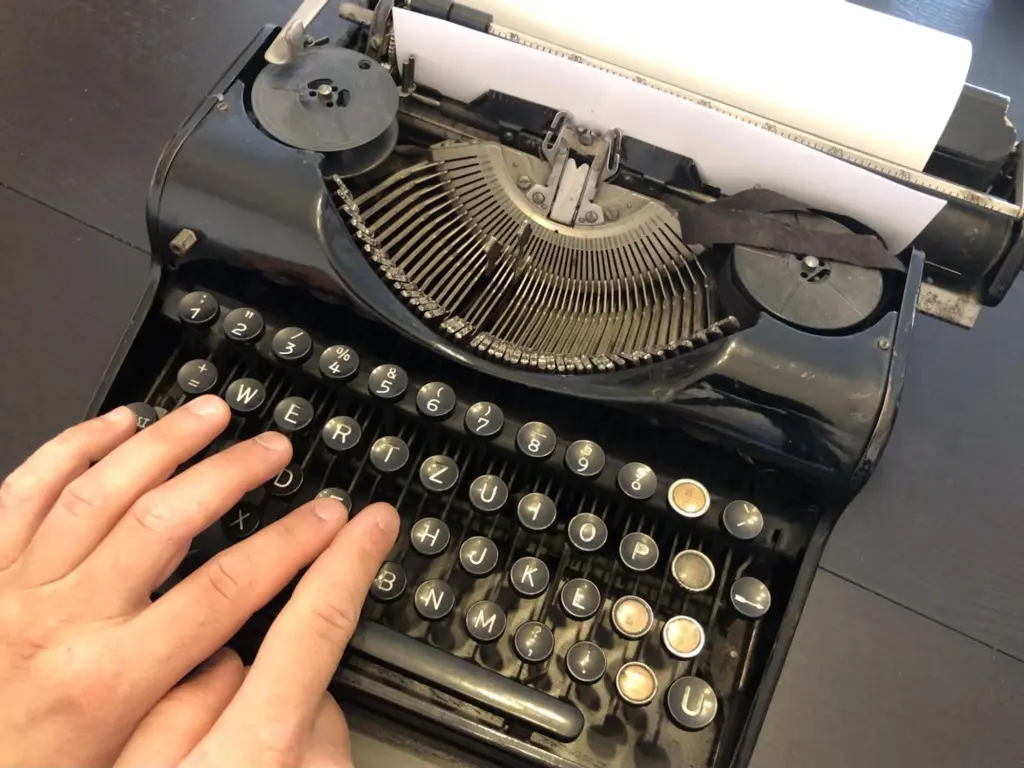
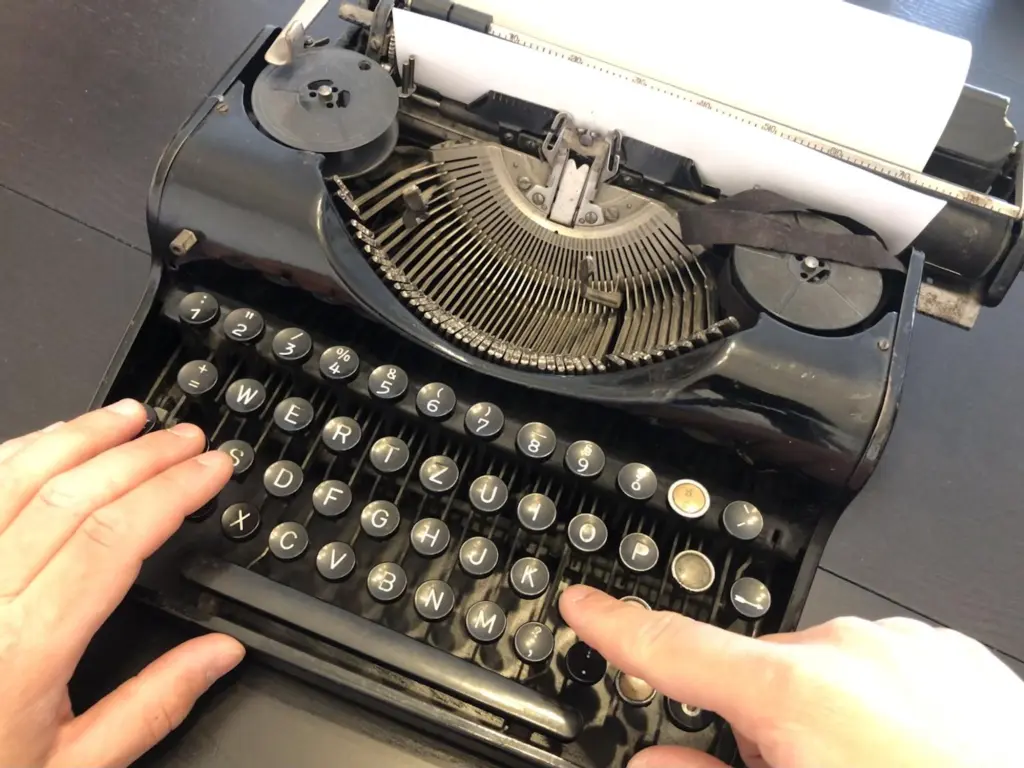
Which one is more likely to jam? The first. QWERTY reduced this risk by spreading frequently used pairs apart.
MYTH: QWERTY was designed for ergonomic typing.
FACT: QWERTY was designed to reduce mechanical jamming.
Modern Keyboards and the QWERTY Layout
Now take a look at a modern keyboard:

Are the staggered rows and QWERTY layout still necessary? Definitely not.
QWERTY Key Arrangement
Modern keyboards don’t jam. You can press multiple keys at once.Row Offset
Modern keys use switches and circuit boards — no need for rod alignments.
So why does your 2022 keyboard still look like a 19th-century typewriter?
Solving the Puzzle
The answer is simple: people are used to it.
During the shift from mechanical to electronic keyboards, manufacturers stuck with the familiar layout to avoid confusing users.
This has nothing to do with ergonomics or typing efficiency.
The popularity of QWERTY is alarming — the layout has become so widespread that most people are unaware of its history or the fact that alternatives even exist.
I’m also referring to people closely connected to the IT industry.
In my opinion, each of us should ask ourselves one question:
Is the amount of time we spend typing on a keyboard worth investing in learning a more efficient layout, or should we stick with something that has no real connection to efficiency and is merely a matter of habit?
After all, if something is used by millions, it must be good for us… right?
Thanks for reading!
Bartosz
